Since my childhood, I always dreamed of being a scientist. I have always had an interest in scientific materials, documentaries, movies, magazines, museums… everything related to science, but at some point, when I studied for my undergraduate degree, I realized that not all people have the same opportunity to access science as I did.
where it all started
As part of my training as a biology teacher, I did a class on “Brazilian Sign Language” (Libras) where I learned about the Brazilian deaf community and its challenges. I became aware that many of the scientific materials that influenced my own career were not available in sign language, meaning that they are not accessible to deaf people which could lead them to be excluded from this field.
It was at that point, I decided that I wanted to try and make science more accessible, and I started my undergraduate research at the Museum of Science and Technology from PUCRS (MCT-PUCRS), developing activities of social inclusion, and understanding how science museums can help the deaf community to feel inspired to do science through interactive content.
I then continued my studies on inclusion and accessibility of deaf communities in Brazilian science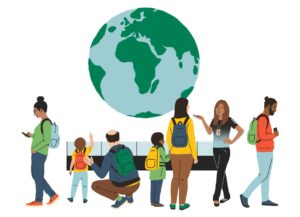 museums and for my master’s degree thesis I explored how three Brazilian Accessible Science Museums promote activities of popularization of science to deaf visitors.
museums and for my master’s degree thesis I explored how three Brazilian Accessible Science Museums promote activities of popularization of science to deaf visitors.
working with likeminded people
During my research, I become a member of the research group Accessible Science Museums and Centres (MCCAC) and started developing activities and projects aiming accessibility in museums, such as a glossary of museums signs in Brazilian Sign Language and a mapping of accessible virtual exhibitions of Brazilian science museums.
Other related videos can be found on MCCAC’s YouTube channel.
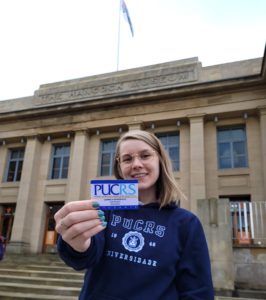
I also joined another research group, called Study and Innovation in Brazilian Sign Language Group led by a deaf Professor from PUCRS, and we started developing a Glossary of Scientific Signs in Libras where we created or adapted scientific concepts to the sign language.
I am now doing a PhD in Education at PUCRS, currently on a 6-month exchange project in the UK at Newcastle University and the Great North Museum: Hancock (GNM).

I have expanded my research to include other people with disabilities as I want to understand more about how science museums can help include people with disabilities in the STEM fields and build their science capital.
A short talk about my research can be seen here.
science capital and inclusion in museums
When studying about the exclusion of people with disabilities in STEM fields, I found that some researchers are studying how science capital influences the scientific aspirations of young people. (ASPIRES research)
This work found that science capital can be influenced by gender, ethnicity, and social background, but this doesn’t explicitly address the perception of people with disabilities into STEM.
Historically this group can be excluded, mainly due to the lack of accessibility in science language (a communication barrier), scientific places (a physical and architectural barrier) and other people’s behaviour (an attitudinal barrier).
Science museums and science centres are spaces for the construction of science capital because they are places where people can enjoy science in different ways, learn about science with different resources and where attitudes and values towards STEM can be positively influenced. Also, science museums, when they aim to be inclusive, can be accessible to people with disabilities and stimulate their interest on science.
Participation in out-of-school learning activities, including visiting science museums is one of the eight dimensions of science capital. Visits are important for helping to build interest in science, but it will be a barrier if the museum is not accessible to people with disabilities as it will negatively affect people with disabilities’ science capital.

For my PhD sandwich project, I will be conducting interviews with museum practitioners at GNM and running guided visits, and interviews, with visitors with disabilities that visits the GNM, to understand their perception of the accessibility and their sense of bellowing in the scientific field. When I return to Brazil, I will extend this research to Brazilian museums and to the Brazilian context.
During my recent trip to London, I visited the Science Museum to find out more about its approach on science capital and open for all framework.
That was a great opportunity for me to see how a science museum can be designed to be accessible to all, allowing anyone to feel that science in “for me/for them”, like I always felt.
Science Museum Group (SMG) museums are designed to engage everyone with STEM, from the front door to the website, galleries, exhibitions, bathrooms and other spaces, and work closely with disabled people to tell their stories, represent them in the portrayals of people in STEM and delivering a range of activities for disabled visitors. For the SMG staff, there is support and training to allow them to understand the impact of their role in relation to access.
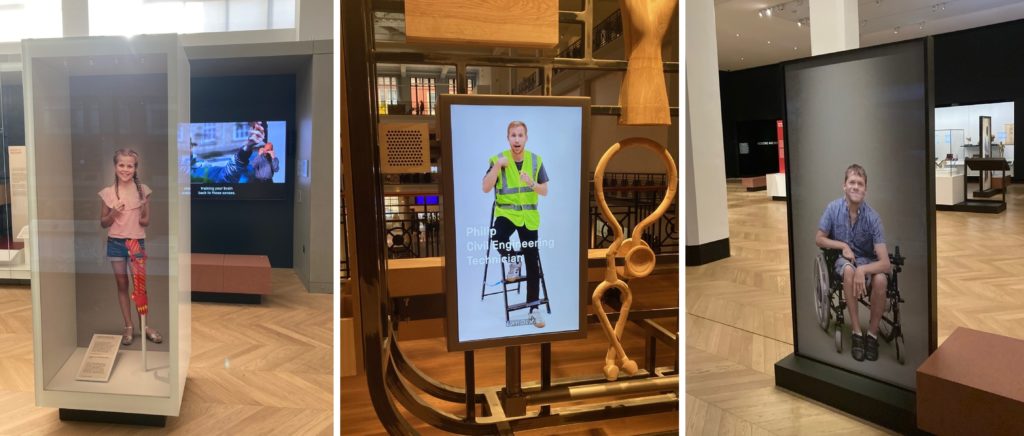
bringing science capital to brazil
Through all my research on science capital, I realized that the materials, aimed at primary and secondary education teachers and the academic community in the UK, are a valuable resource for the Brazilian context, but they are not accessible and are not currently used in Brazil as they are published in English.
To overcome this, I started translating the English materials into Portuguese and applying it into the Brazilian context. I have been sharing my work on social media – @sciencecapitalbrasil on Instagram twitter blog – that have a google translate tool and can be translated to other languages .
These social media channels and the Science Capital Brasil project have just marked their one-year anniversary. Over this time, I have been able to reach primary and secondary teachers, who send me messages about their experiences with science capital, and also many people – from students to scientist – that have never heard this concept before and doesn’t knew the materials, are now being able to access it through my posts.
In one year, we reached more than 1.100 followers and 125 posts on Instagram alongside over 20 posts on the blog.
Through my networks visibility, I have been able to help English researchers in the official translation of materials, as can be seen in Idea YESTEM and Primary Science Capital Teaching Approach.
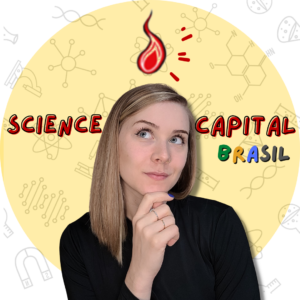
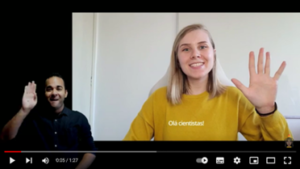
In addition to translating into Portuguese, I have also created a series of videos which explain the concepts related to the science capital in a simple and casual way. I have made these videos available with subtitles and a translation into Brazilian Sign Language (Libras) for my Instagram and YouTube profile.
I have been working to promote the inclusion of different audiences by dissemination and popularising these materials in Brazil and with the deaf Brazilian community. In total, I have 20 videos, of which 11 have Libras translation and that have been accessed more than 2.430 times.
to be continued…
My research is still in progress. My sandwich project will finish in January 2023 and my PhD in March 2025. Until then, I will be publishing my results on social media and through journal papers.
Nice!!
Gabriela is a great student and researcher. I am very proud to follow her footsteps in her PhD journey.